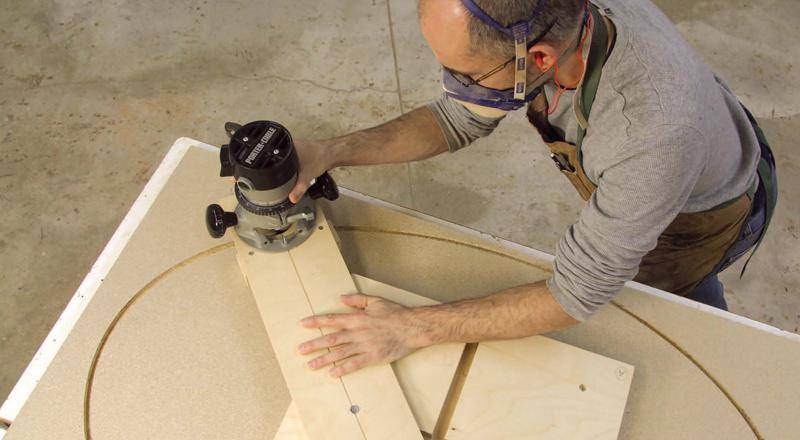4 Effective Techniques For How to Cut Circles in Wood
Tackling a new DIY project often involves a variety of skills, one of which might be figuring out how to cut circles in wood. Whether you’re crafting a decorative piece, creating a round table, or even making a simple toy, the ability to cut a perfect circle in wood can elevate your project from good to great. If you are new to cutting wood or just never had the opportunity to learn cutting circles in wood, don’t worry we’ll explore the nuances of this task, offering 4 effective techniques to help you master the art of circular cuts in woodworking.
Ready to take your woodworking skills to the next level? Learn how to cut circles in wood and test out your new skills with TedsWoodworking—your gateway to 16,000+ woodworking projects. Let’s turn your woodworking dreams into reality together. Explore now!
Understanding the Basics of Cutting Circles in Wood
Before diving into the actual cutting process, it’s essential to grasp the basics. Cutting circles in wood isn’t as daunting as it might seem, but it does require precision and patience. First, you’ll need to decide on the diameter of the circle and the type of wood you’re working with. Different woods have varying levels of hardness and grain patterns, which can affect the ease of cutting and the finish of the circle. It’s also important to choose the right tools for the job. While there are several methods to cut circles, each has its advantages and is suited to different situations.

For smaller circles, a drill press with a hole saw attachment is often the easiest and most precise method. For larger circles, a jigsaw or a router with a circle-cutting jig can be more appropriate. No matter the method, always start by marking your wood clearly and accurately. A homemade circle jig can help you draw a perfect circle on the wood surface. Remember, the key to a successful cut is in the preparation. Ensuring your tools are sharp and your measurements are accurate can make all the difference.
Using a Jigsaw to Cut Perfect Circles in Wood
One of the most versatile tools for cutting circles in wood is the jigsaw. It allows for a great deal of flexibility in terms of the size of the circle and the type of wood. To use a jigsaw effectively, start by drilling a pilot hole inside the circle you’ve marked. This hole will serve as the entry point for your jigsaw blade. When cutting, it’s crucial to maintain a steady pace and let the blade do the work. Forcing the blade too fast can result in jagged edges or even break the blade.

A helpful tip is to use a fine-toothed blade for cleaner cuts, especially on plywood or veneer. Additionally, if you’re working on a larger project, consider using a clamp to secure the wood. This will prevent any unwanted movement and ensure a smoother cut. Practice makes perfect when it comes to using a jigsaw, so don’t be discouraged if your first few attempts aren’t flawless. With time and experience, you’ll be able to cut perfect circles with ease.
Power Drill and Cutting Attachment
When you have a project that requires a relatively small to medium circle cut in wood, you should consider using a drill and a hole saw bit. Not only is this method easy, but you likely have a power drill already and might have to pick up a few affordable attachments or even a set. When trying out this method, make sure to measure the center of the hole and mark it with a visible marker or pencil.

With the circle of your hole marked, all you need to do is assemble the drill bit with the correct size hole saw attachment then, you will begin drilling using the drill bit in the middle of the circle, and it will perfectly drive the attachment into the wood. Take it slow to cut clean but not too slow that you end up burning up the wood. You will feel the drill bit and hole saw attachment drive into the wood, so apply appropriate pressure and clean up the circle afterward with sandpaper for a polished finish.
Using a Router and Jig for Circle Cutting
For those seeking precision and consistency in their circle cuts, using a router with a circle-cutting jig is an excellent choice. This method is particularly useful for larger circles or when working on projects that require a high level of accuracy. Setting up the jig correctly is paramount to achieving the desired outcome. Most jigs allow you to adjust the radius of the circle, so take the time to measure and set it accurately.

The beauty of using a router is the smooth, clean edge it produces, often requiring minimal sanding. However, it’s important to choose the right router bit for the material you’re working with. For most woods, a straight bit will suffice, but for harder woods, a spiral up-cut bit may be a better choice. As with any tool, safety is paramount. Ensure you’re wearing appropriate protective gear and that you’re familiar with the router’s operation before you begin.
Hand Tools and Techniques for Cutting Circles in Wood
For those who prefer traditional woodworking methods or may not have access to power tools, hand tools can also be used to cut circles in wood. The key tools for this method are a coping saw or a bow saw. Although using hand tools requires more effort and time, it can be incredibly rewarding and offers a level of control that power tools cannot match.

When using a coping saw, start by drilling a pilot hole similar to the jigsaw method. Then, insert the saw blade into the hole and carefully follow the line you’ve marked. The trick with hand saws is to maintain a consistent angle and pressure to ensure a smooth cut. It’s also beneficial to periodically check your progress and adjust your technique as necessary. Although this method may not produce as clean a cut as power tools, it allows for a hands-on experience and can be very satisfying.
Related Articles:
- Corn Hole Designs That Are Sure to Elevate Your Game
- How to Do a Cross Cut Quick and Easy Using a Miter Saw
- 13 Beginner-Friendly Outdoor Woodworking Projects
As we conclude, remember – TedsWoodworking is your ally in woodworking aspirations. Dive into 16,000+ projects with ease. Your creativity knows no bounds. Happy crafting!
From decorative art pieces to functional furniture, the ability to cut a perfect circle in wood can set your projects apart. So, take the time to experiment with different tools and techniques, and don’t be afraid to make mistakes. Each attempt is a learning opportunity that brings you one step closer to mastering this useful skill. Happy woodworking, and make sure to sign up for our newsletter to stay updated on our latest guides, tips, how-tos, and much more.









